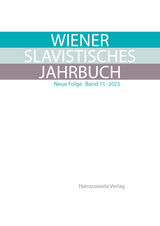Autor: Федор Поляков
- «
- 1
- »
Die Suche erzielte 6 Treffer.
Из комментариев к книге стихотворений и переводов Эллиса «Крест и Лира» I. Имена волхвов: след немецкой мистической традиции research-article
Ilya Perelmuter, Russische Poesie in deutschen Übersetzungen. Bibliographie ausgewählter Werke. Wien: danzig & unfried, 2020. 450 S. book-review
Пушкинская выставка 1932 года в Праге, I: Проект Николая Зарецкого и его реализация в контексте чехословацко-русского взаимодействия research-article
Памяти Елизаветы Аркадьевны Мнацакановой (1922–2019) research-article
«Чудный заколдованный круг». Эллис в Локарно в 1930-е годы research-article
- «
- 1
- »
